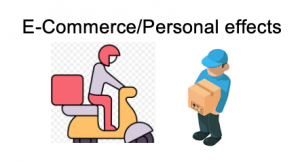As we are entering a new year, companies grapple with economic and political uncertainty, CEO and CFO are taking a look again of their strategic analysis and list of their organization actions for the next 12 months. This holds true for the logistics and supply chain industries, where both shippers and providers/forwarders are facing similar challenges. In the face of uncertainty, many companies maintain a focus on transforming outdated methods, prioritizing the rebuilding process with technology, retraining its staff to run day-to-day operation using an application instead of paper-based method.
Additionally, there is a shift toward learning data analysis provided by real-time technology, replacing the reliance outdated month-end summary reports. Reflecting on our transformed lives, shifting from analog to digital lifestyles, it’s evident that we’re inseparable from our gadgets.These devices play a crucial role in enhancing our daily activities, enabling us to stay connected with loved-ones and business partners. Amid this technological shift, one particular sector that has captured widespread interest is e-commerce. Defined as parcel shipments or personnel effects weighing no more than 30 kgs, e-commerce has surged in popularity in the modern era.
However, certain foreign marketplaces/websites have strategically manipulated e-commerce regulations in host countries where they operate. These foreign marketplaces leverage lower production costs, often stemming from their large domestic populations. Some even enjoy government subsidies, allowing them to send products in large volumes to other nations. They typically sell these products on foreign websites, often from the same country, operating under the e-commerce or personal effects regulatory framework. This approach circumvents regular commerce regulations, which involve stricter import license compliances and, in some cases, higher import duty rates.
These foreign websites have created challenges for domestic businesses in host countries, leading to issues like workforce losses and reduced competitiveness to Small-and-Medium-Enterprises. As a result, there has been a recent update of e-commerce regulations implemented by several Asian countries, and it’s likely that others may follow suit. These new measures aim to ensure the proper categorization and declaration of items in the host countries.

Key regulations requirements for import ecommerce documents to be under individual names, with receipts for purchased items inside the parcel, and uploading onto a designated platform. The proper declaration of the Harmonized System (HS) code for each item needs to be included in corresponding duty and taxes, that the shopper can proceed with making online payment on the platform. Upon clearance from inspection, the designated appointed agents, acting on behalf of the consignee, are expected to settle the duty and taxes.
These agents, who transmit data of incoming shipments and receive the total payment during order placement via their operating platforms, have established technology link with customs offices. This process ensures that parcels are properly entry into the country and subsequently handed over to the last-mile delivery agent. These changes in measures are implemented to improve transparency and to better control over the influx of foreign goods, ensuring that personal effects/e-commerce and commerce items adhere to the right regulation.
Implemented technology can significantly enhance business effectiveness in various ways. However, integrating and embedding these technologies into current business methods is easier said, than done. As technology-and-telecommunications converge into one integrated infrastructure, companies become vulnerable if they remain stagnant. They should either build or retrain their workforce to adapt to the technological foundation, learning the available technologies in the market. This is an absolute minimum requirement to remain competitive in the Global Digital Economic era. Written by Eddy Syaifulah.
